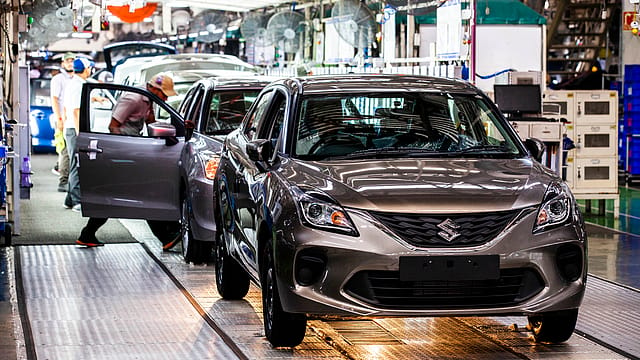Passenger vehicle sales rise 6.5% in August: FADA
ADVERTISEMENT

Retail sales of passenger vehicles rose 6.5% year-on-year to 3.15 lakh units in August, according to data released by the Federation of Automobile Dealers Associations. PV sales in July stood at 2.84 lakh units.
This was aided by improved vehicle supply and expanded customer schemes, the auto dealers' lobby says. "Despite such advances, supply chain bottlenecks persist, particularly in timely deliveries. The market has responded favourably to the introduction of new hybrid and CNG models; however, a constrained product range in popular segments, such as mid-size SUVs, continues to limit overall potential," it says.
FADA says it is alarming that inventory levels have exceeded the 60-day supply for the first time, even before the onset of the Navratri-Diwali festivities—a trend that necessitates vigilant monitoring by PV original equipment makers (OEMs).
The overall auto sales registered a robust 9% growth, albeit marginally lower than previously reported figures. The uptick was consistent across multiple vehicle categories, with two-wheelers seeing a 6% increase and commercial vehicles up by 3%. Notably, three-wheeler sales reached a historic high in August, registering 99,907 units—a year-on-year increase of 66%.
When compared against pre-Covid benchmarks, the auto retail sector indicated a modest 0.8% improvement, led by two-wheelers recouping lost ground and mitigating de-growth by 11%, says FADA.
Despite positive growth in the two-wheeler segment, consumer sentiment remained ambivalent, impacting conversion rates and intensifying competition among key players, the auto dealers' lobby says.
December 2025
The annual Fortune 500 India list, the definitive compendium of corporate performance, is out. This year, the cumulative revenue of the Fortune 500 India companies has breached $2 trillion for the first time. Plus, find out which are the Best B-schools in India.
Despite headwinds such as sluggish cargo movement in the CV sector, verticals like cement, iron ore, and coal exhibited robust demand, says FADA. "As the festive season approaches, indicators suggest a market recovery, reinforced by priority supply scheduling and resurgence in travel-related sales. Aggressive promotional initiatives and enhanced customer sentiment further support this optimistic outlook," says FADA.
However, FADA says the outlook for September remains 'cautiously optimistic', shaped by a multitude of factors that vary across vehicle segments. In the two-wheeler market, while a broader range of models is now available, subdued rural demand due to insufficient rainfall could temper sales growth, it says. "For CVs, although bulk deals and the favourable timing of the construction season in September add to the optimism, the real sales momentum is anticipated to pick up during the Navratri and Deepawali festival following the Shraadh period. The PV market, meanwhile, offers a mixed bag: new product launches and better stock availability are positive signs, but high customer discount expectations and the impact of the Shraadh period may act as small speed breakers," says FADA.
After a prolonged period of stagnation, rural demand is showing signs of a positive resurgence. However, this recovery remains tenuous, contingent on the performance of the final phase of the monsoon season according to FADA.
"Lack of sufficient rainfall could precipitate a rise in inflation, adversely affecting consumer purchasing power and diminishing demand. This meteorological shortfall would not only jeopardize the yield of the ongoing kharif crops but also cast a shadow on the subsequent sowing season for rabi crops," FADA says, adding that such developments would be particularly inopportune as they would coincide with the peak of India's festive season.
